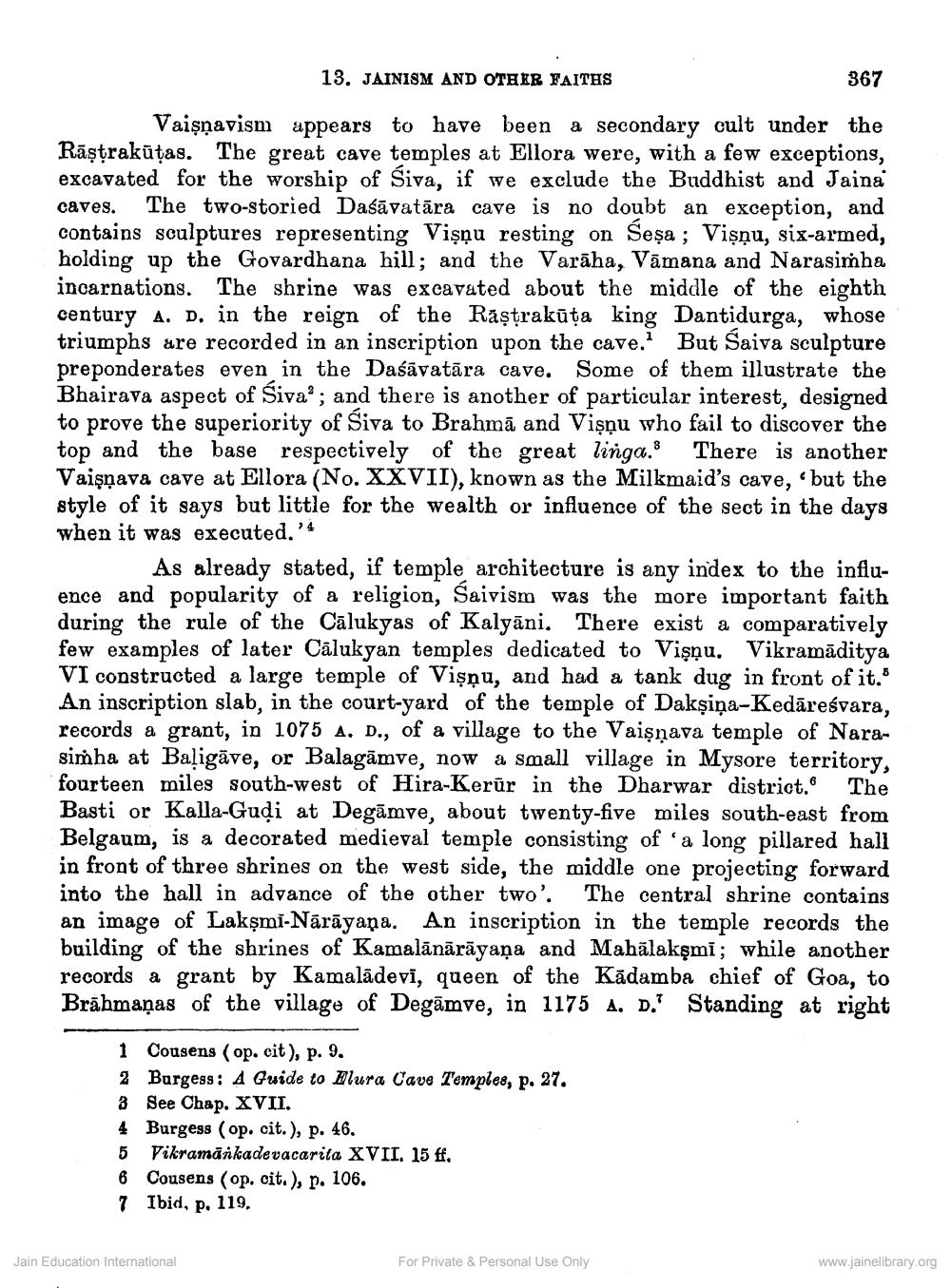________________
13. JAINISM AND OTHER FAITHS
367
Vaişņavism appears to have been a secondary cult under the Rāştrakūțas. The great cave temples at Ellora were, with a few exceptions, excavated for the worship of Siva, if we exclude the Buddhist and Jaina caves. The two-storied Daśāvatāra cave is no doubt an exception, and contains sculptures representing Visnu resting on Sesa; Visnu, sixholding up the Govardhana hill; and the Varāha, Vāmana and Narasimha incarnations. The shrine was excavated about the middle of the eighth century A. D. in the reign of the Răştrakūta king Dantidurga, whose triumphs are recorded in an inscription upon the cave. But Saiva sculpture preponderates even in the Daśāvatāra cave. Some of them illustrate the Bhairava aspect of Siva? ; and there is another of particular interest, designed to prove the superiority of Śiva to Brahmā and Vişņu who fail to discover the top and the base respectively of the great linga. There is another
şņava cave at Ellora (No. XXVII), known as the Milkmaid's cave, but the style of it says but little for the wealth or influence of the sect in the days when it was executed.?
As already stated, if temple architecture is any index to the influence and popularity of a religion, Saivism was the more important faith during the rule of the Cālukyas of Kalyāni. There exist a comparatively few examples of later Cālukyan temples dedicated to Visņu, Vikramaditya VI constructed a large temple of Vişņu, and had a tank dug in front of it." An inscription slab, in the court-yard of the temple of Dakşiņa-Kedāreśvara, records a grant, in 1075 A. D., of a village to the Vaişnava temple of Narasimha at Baligāve, or Balagāmve, now a small village in Mysore territory, fourteen miles south-west of Hira-Kerür in the Dharwar district. The Basti or Kalla-Gudi at Degāmve, about twenty-five miles south-east from Belgaum, is a decorated medieval temple consisting of 'a long pillared hall in front of three shrines on the west side, the middle one projecting forward into the hall in advance of the other two'. The central shrine contains an image of Lakşmi-Nārāyana. An inscription in the temple records the building of the shrines of Kamalānārāyana and Mahālaksmi; while another records a grant by Kamalādevi, queen of the Kādamba chief of Goa, to Brāhmaṇas of the village of Degāmve, in 1175 A. D. Standing at right
1 Cousens (op. cit), p. 9. 2 Burgess: A Guide to Blura Cave Temples, p. 27. 3 See Chap. XVII. 4 Burgess (op. cit.), p. 46. 5 Vikramānkade vacarita XVII. 15 ff. 6 Cousens (op. cit. ), p. 106. 7 Ibid, p. 119.
Jain Education International
For Private & Personal Use Only
www.jainelibrary.org




